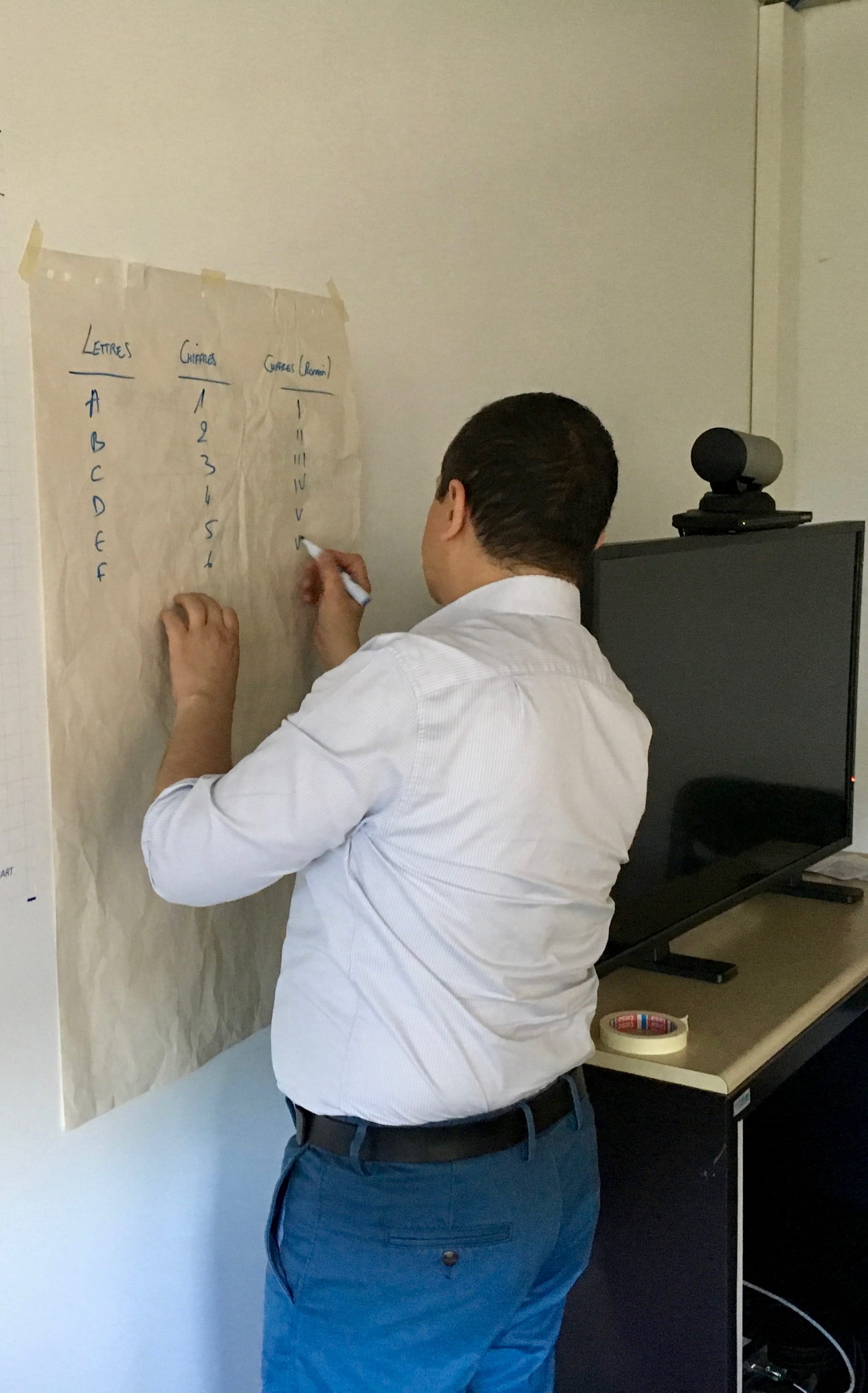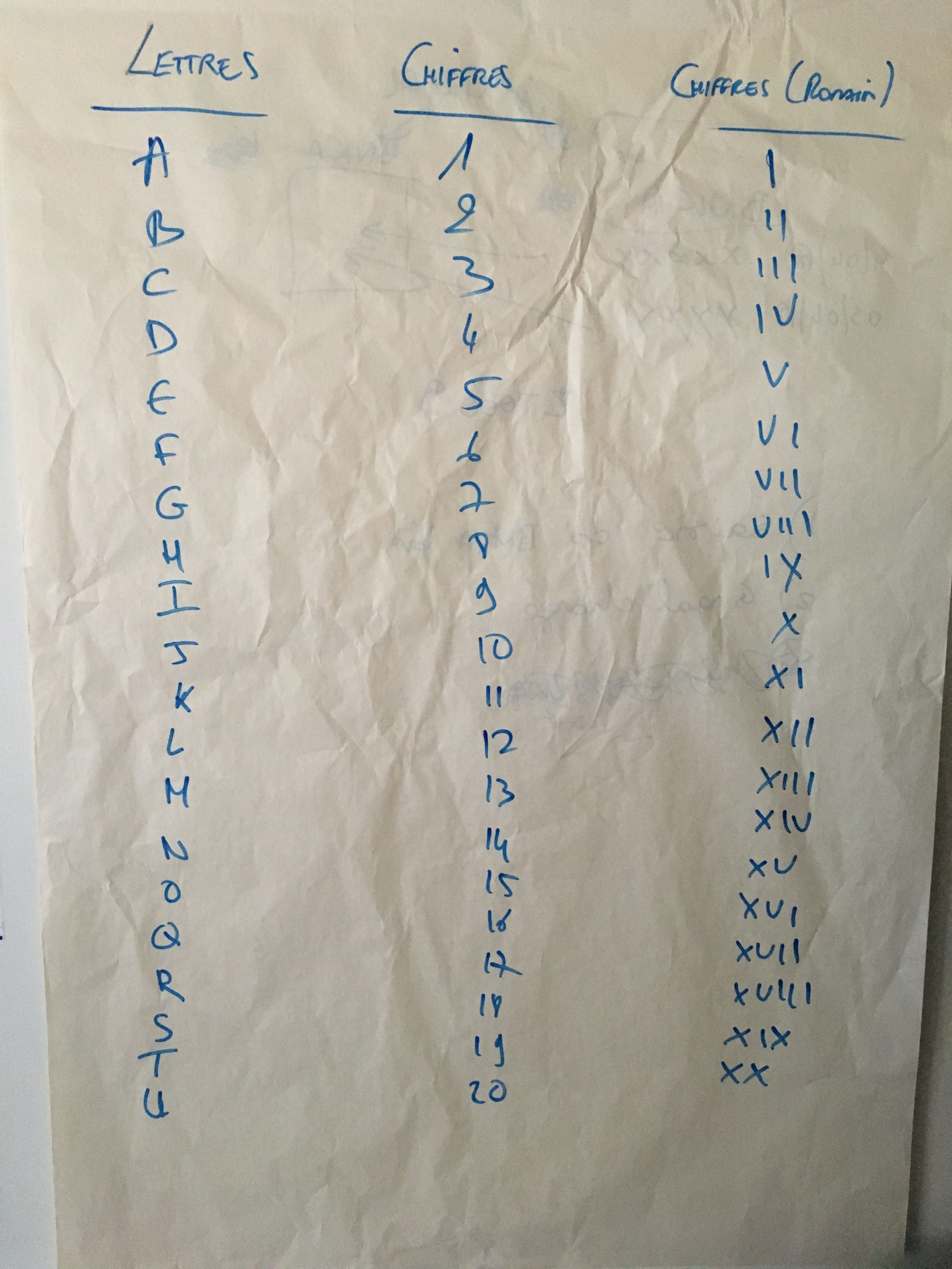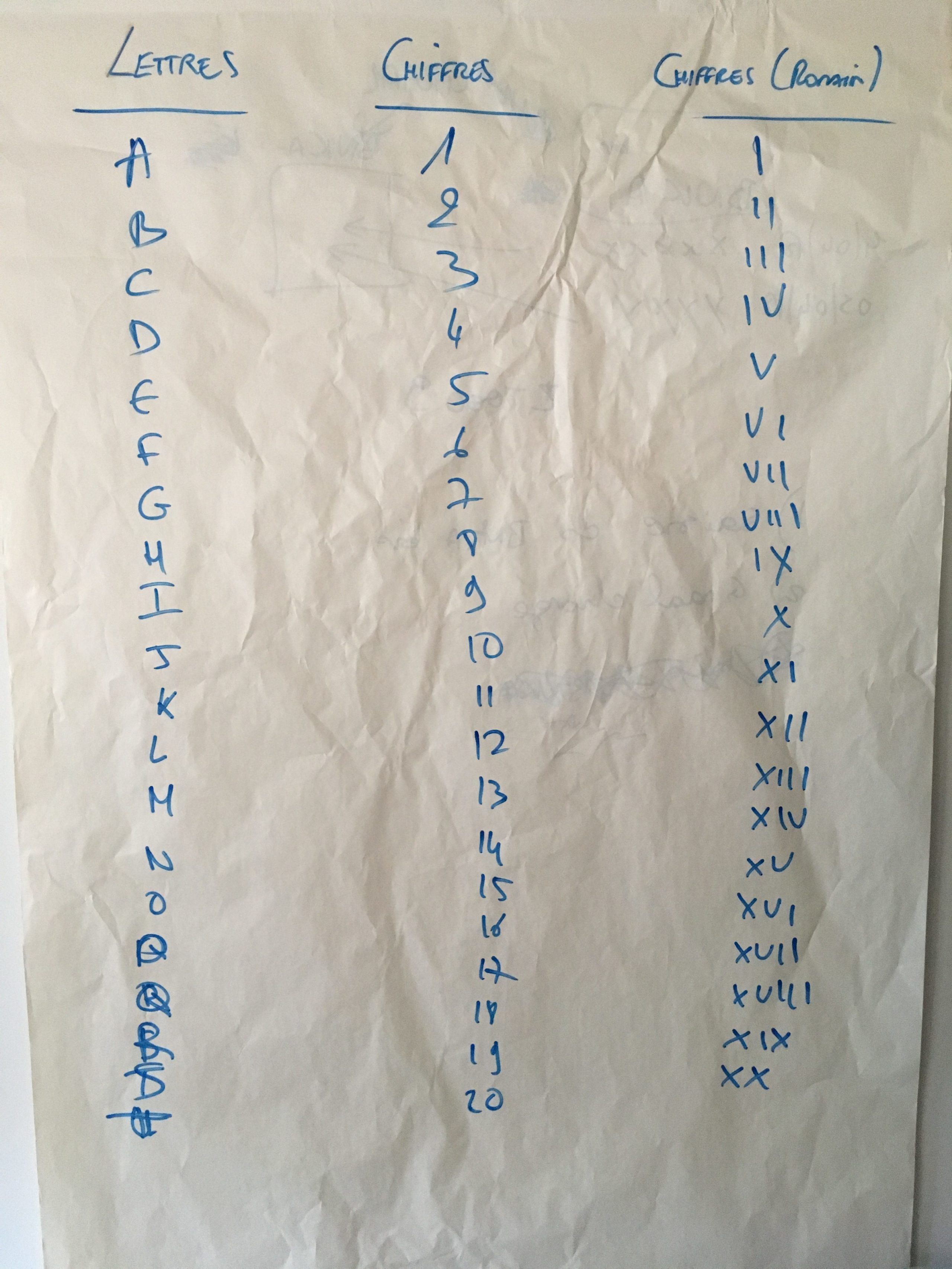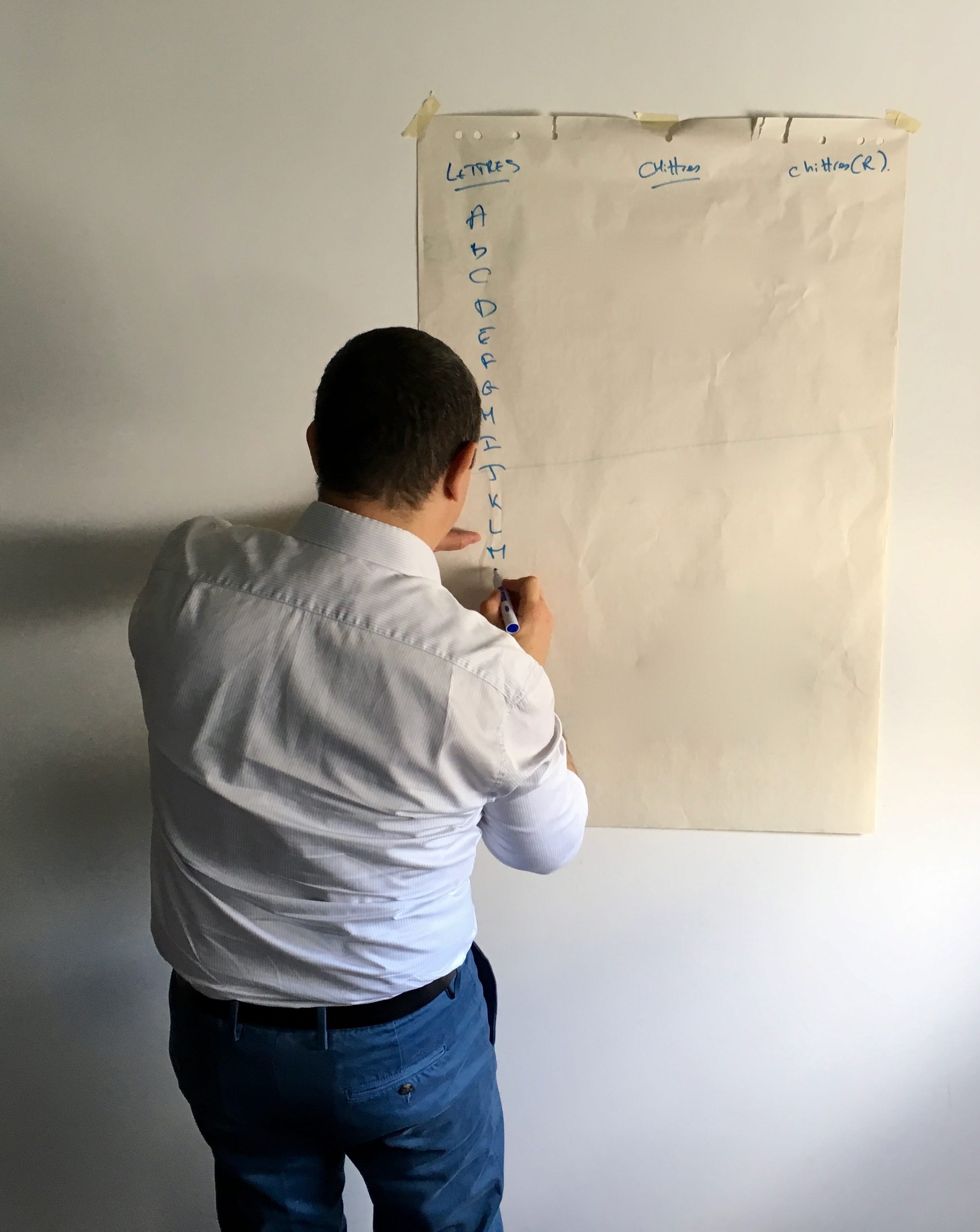
Photo by rawpixel on Unsplash
During a meeting with 3 people a few days ago, one of them tells me that she is working on 3 subjects at the same time and asks me quite sincerely: “Isn't it good? ". You can well imagine that I took the opportunity to hammer my “Stop Starting, Start Finishing” favorite but rather than repeating it, you might as well try it out.
I asked one of his colleagues to take part in a little experiment, which he valiantly accepted!
Here is what I offered him! 🙂
Material
- Sheet / Flipchart
- Felt pen
- Stopwatch
Note: you recognize here my concern for the least material! 😛
Instructions
Your mission, if you accept it, will be to write in 3 columns, respectively:
- The 26 letters of the alphabet
- The numbers from 1 to 26 in Arabic numerals
- Roman numerals from 1 to 26
and all as quickly as possible of course!
The workshop will take place in 2 rounds:
- Round 1: the writing will be done by switching columns at each element (in horizontal)
- Round 2: the writing will be done by column (vertically)
Unrolled
Round 1

The challenge launched, we can begin to observe what is happening.
You can feel the stammering of the brain to change intellectual task: there is a slight pause between each writing which jerks the realization.
Arrived in the middle of the race, without real visibility on the objective, a feeling of being lost occurs:
“I still have half of it to do?! »
Note: After 10 letters, I thought the exercise was long enough to get the desired result so I reduced the instruction to 20 rather than 26.

Nothing shocks you?

And there? 😛
The example here is glaring of the loss of work coherence after a while when multitasking lasts too long.
Indeed, let's keep in mind that the workshop puts us here in an extreme switch situation! 😉
Round 2

Unsurprisingly, the tour unfolds more serenely.
The writing flow is continuous until the moment of the switch on the following column, the focus is present.
There are therefore only 2 latency moments in this round against 59 in the previous round.
time study
| Round 1 | 1 minute 55 seconds | 115 seconds |
| Round 2 | 1 minute 08 seconds | 68 seconds |
So we have a productivity loss of about 40% on turn 1 under the effect of the task switch.
Can you imagine the impact of this practice on complex creative tasks when you see the result on tasks as simple as writing letters and numbers?
Debriefing
The debriefing is fairly straightforward as the results usually speak for themselves.
However, I would add a few additional elements:
- What is called "Multitasking" is in fact a concept that does not exist, because neurologically impossible. Indeed, the brain cannot process 2 things at the same time but will switch from one to the other at such speed that we can have an illusion of simultaneity. The more appropriate term would therefore be “Switchtasking”.
- “Multitasking” would damage the brain
- “Multitasking” would decrease the Intelligence Quotient
- The more you use your brain, the more you risk making mistakes.
- Those who claim to be "Multi-tasking" the most are generally those who are in fact the least good at it.
Sources :
- https://www.planzone.fr/blog/pourquoi-multitache-nuit-projets
- http://www.slate.fr/lien/67581/multitache
- http://www.sciencepresse.qc.ca/actualite/detecteur-rumeurs/2017/06/21/cerveau-multitache-mythe-plutot-vrai
Conclusion
A small, quick-to-perform workshop that generally has its effect! 🙂
Note: you can of course change the different activities as you wish, the idea being simply to make the participant switch from one intellectual task to another.
Stop Starting, Start Finishing







4 Responses
Great! There is also a good article on this illusion of multitasking in the magazine Brain and Psycho N°100 by Jean-Philippe Lachaux, who explains that we know how to biologically observe this impossibility of doing 2 tasks at the same time.
Thank you Olivier for the article, always great opportunities to question and learn your articles, I love it.
Your workshop seems interesting to me because it makes you aware of the limits of multitasking. So it's mission accomplished. Afterwards, I am more careful about the debrief. From a certain point of view, you give the impression with the workshop that multitasking is the reason for the performance gap when maybe not that much. Indeed, you initially require a much greater learning effort than in the second case. So, of course, multi-tasking makes it more difficult to achieve, but in the second case, for example, you rely on an ingrained behavior and therefore the learning effort is much less.
Expressed differently, I would be cautious about the confusion created between the notion of multitasking (the tasks we do in our daily lives) and the multitasking nature of the brain. If we struggle to switch from one task to another, it's for a lot more reason than the switch speed of the brain. I mentioned the fact that the behavior is previously anchored, I add here the notion of attention filter.
For the most curious, the notion of multitasking in neuroscience is rather treated under the term divided attention and focuses on tasks that take place at the same time (such as driving while on the phone). The illusion is to think that we are fully aware of the two tasks and for all that, we cannot reject the idea that at the speed of our consciousness we are indeed doing the two two things at the same time. The policeman on the side of the road will see that you do both (go and explain the brain switch to him). It is therefore a question of attention, in my opinion. To dig further, we must be aware that even in the case where we only do one thing at a time, the "attention filters" to popularize prevent us from being fully aware of the "reality" that surrounds us. So, and this will be my conclusion, the brain proposes highly complex phenomena and it may be risky to isolate a possible “reason”. It is tempting to make a connection between our switching speed between two tasks and the switching speed of the brain. To illustrate, it's like restricting the capacity of traffic flow on a highway to the opening capacity of the toll gates. It is certainly a limiting factor but far from being the only one and certainly not the most impacting.
I loved your article.
All the challenges that my Taskworld Project Assistant faces on a daily basis can be found there.
Absolutely all.
Including: tracking of time spent by tasks / to-do lists / projects / collaborators.
I would like to know your impressions of the tool: https://taskworld.com/fr/signup/
What do you think?
Thanks for the article Oliver! It gives me a lot of inspiration. A variant could also be to timebox each round (with the duration that intentionally would not fill the 3 columns). In the first round no column would be filled and therefore no value produced, while in the 2nd round one or two columns would be completed and therefore there is indeed value produced at the end of the iteration. This would once again highlight your favorite principle “Stop Starting, Start Finishing” 🙂